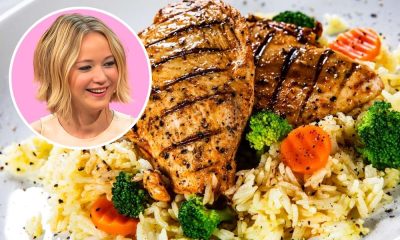Diets
South Beach Diet
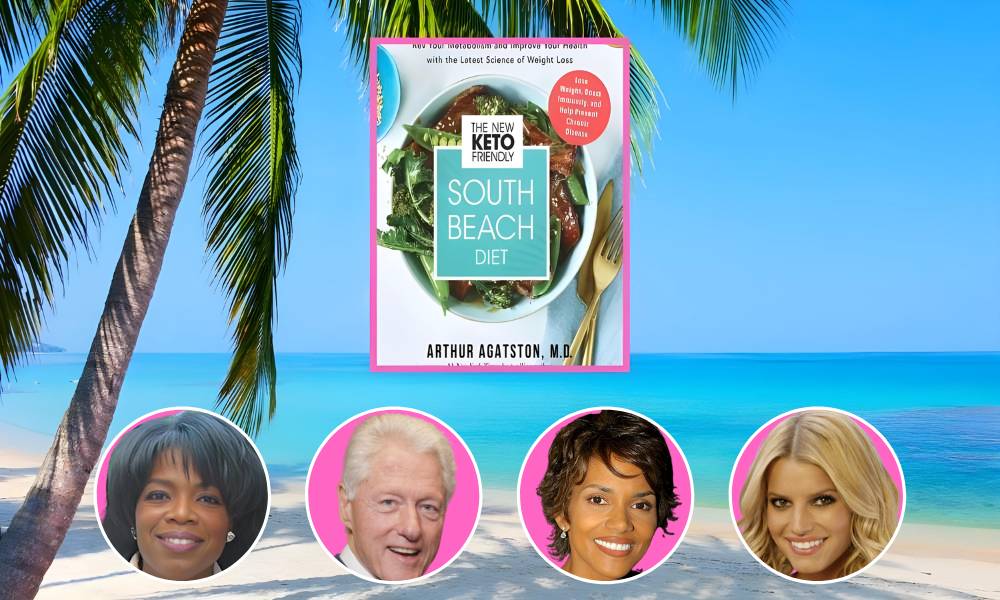
What’s special about the South Beach Diet is its focus on picking better carbs and fats instead of just cutting calories.

Nicole Kidman has used the South Beach Diet with some success. PHOTO: Galeria de burningkarma
The South Beach Diet
The diet was developed in the mid-1990s by cardiologist Dr. Arthur Agatston with dietitian Marie Almon. Named the South Beach Diet, it was first developed to prevent heart disease in Dr. Agatston’s patients.
The plan gained popularity for its weight loss benefits, leading to the publication of a book in 2003, which catapulted the diet to national recognition.
What’s special about this diet is its focus on picking better carbs and fats instead of just cutting calories.
This shift changed how people think about dieting. Instead of just counting calories, people started talking more about the quality of the food they eat.
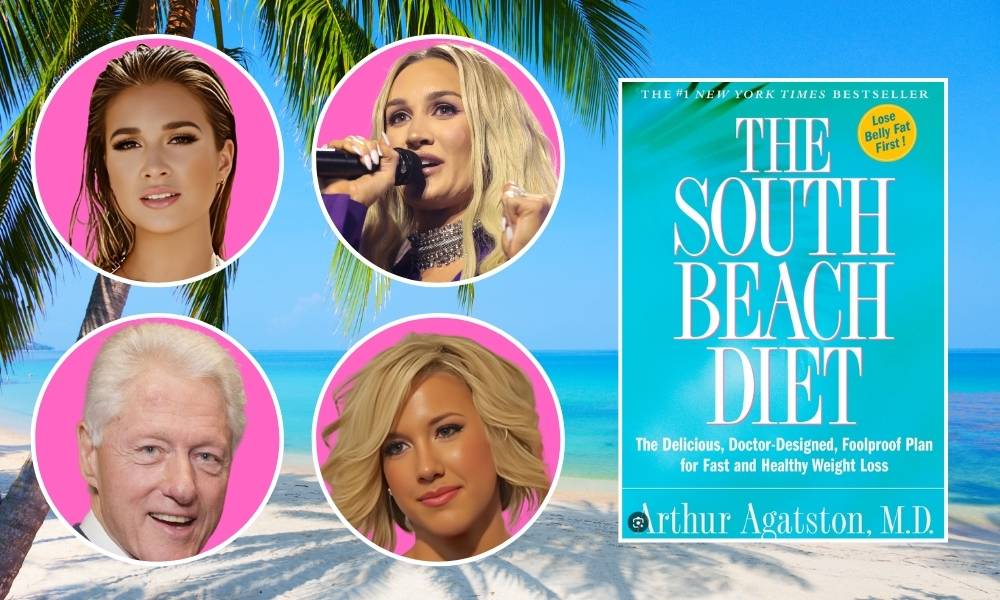
The diet’s foundation is not about high-fat, low-carb extremes, or calorie counting, but about choosing the right carbs and the right fats. This approach helps with preventing heart disease and losing weight healthily and sustainably.
The Three South Beach Phases
Phase 1: The Reset
Duration: 2 weeks
Aim: To kickstart weight loss, reduce cravings for sugar and starches, and begin improving your metabolism.
What to Eat:
- Proteins: There is a significant focus on lean proteins such as chicken, turkey, fish, and seafood. Beans and legumes are also good sources.
- Vegetables: Most non-starchy vegetables are encouraged, including leafy greens, peppers, and mushrooms.
- Fats: Healthy fats from avocados, nuts, and seeds. Olive oil is recommended for cooking.
- Dairy: Low-fat cheese, milk, and yogurt in moderation.
What to Avoid:
- All forms of sugar and sweeteners, both natural and artificial.
- All starchy carbohydrates, including bread, rice, potatoes, and pasta.
- Fruits and fruit juices due to their sugar content.
- Alcohol is strictly off-limits.
Typical Day: Meals are focused on high protein and fiber, with ample vegetables and healthy fats. Snacks are allowed, focusing on protein and healthy fats to keep hunger at bay.

Oprah Winfrey has tried the South Beach Diet too. PHOTO: Alan Light
Phase 2: Gradual Reintroduction
Duration: Until your target weight is reached
Aim: Continue weight loss at a steady pace while reintroducing good carbohydrates and expanding your dietary choices.
Changes You Can Make:
- Whole Grains: Start including whole grains like oatmeal, quinoa, and brown rice.
- Fruits: Slowly reintroduce fruits such as berries, apples, and pears.
- Starchy Vegetables: You can now eat sweet potatoes and other starchy vegetables in moderation.
- Wine: A moderate consumption of red wine is allowed.
Keep in Mind: The reintroduction is gradual, adding one serving at a time and observing how your body responds. The focus remains on low-glycemic-index foods to avoid spikes in blood sugar.
Typical Day: Balanced meals with a broader variety of ingredients, including whole grains and fruits. You’re still focusing on lean proteins, healthy fats, and vegetables but with more variety.

Halle Berry (Photo: Michel Boutefeu) and Jessica Simpson (Photo Craig Sjodin) used the South Beach Diet.
Phase 3: Maintenance
Duration: Indefinite, lifelong
Aim: Maintain your healthy weight, continue enjoying a broad range of foods, and apply the diet’s principles to live a healthier life.
What to Eat: By now, you should have a good sense of which foods best support your health and weight goals. There are no strict restrictions, but the diet emphasizes:
- Maintaining a diet rich in vegetables, fruits, whole grains, lean protein, and healthy fats.
- Moderation in all things, including sweets and alcohol.
- Making healthy choices naturally, without the need for strict rules.

Kim Cattrall followed the South Beach Diet. PHOTO: George Pimental
Approach: If you start to gain weight, you can return to Phase 1 for a short period to reset.
The emphasis is on lifestyle changes rather than dieting, focusing on nutritionally rich foods and regular physical activity.
Typical Day: There is more flexibility in food choices, but the foundation of meals remains similar to Phase 2, with a balanced mix of carbs, protein, and fats. The key is moderation and making healthy choices.
Celebrity Influence
Many celebrities and public figures have openly supported the South Beach Diet, sharing their success stories and how it has benefited them.

From left: Jessie James Decker/Album cover, Brittany Aldean/Gage Skidmore, Savannah Chrisley/Rumorfix.com
This kind of endorsement has significantly boosted the diet’s popularity, with Jessie James Decker, Brittany Aldean, and Savannah Chrisley pictured above among those who have publicly supported the diet.
Over the years, many celebrities have tried the South Beach Diet and shared their experiences.
These celebrities have at various times credited the South Beach Diet for helping them maintain their health, lose weight, or prepare for roles and public appearances.
- Bill Clinton – The former U.S. President famously lost weight on the South Beach Diet.
- Kim Cattrall – Known for her role in “Sex and the City,” she has mentioned following the diet.
- Nicole Kidman – The acclaimed actress reportedly followed the diet to maintain her health and physique.
- Oprah Winfrey – Before partnering with Weight Watchers, Oprah was reported to have tried the South Beach Diet.
- Jessica Simpson – The singer and actress has been open about her diet and weight loss journey, including her experience with the South Beach Diet.
- Eva Mendes – The actress has been reported to follow the South Beach Diet to stay in shape.
- Halle Berry – Though known for her diabetic diet, she has also been linked to the South Beach Diet in her regimen.
- Jesse James Decker – The country singer and reality TV star has endorsed the South Beach Diet, sharing her positive results.

President Bill Clinton lost weight with the South Beach Diet. PHOTO: National Archives
The Buzz Around the Diet
Back in the early 2000s, the South Beach Diet caught everyone’s attention. Thanks to prominent people talking about it and increased news coverage, it became a go-to choice for folks wanting to slim down healthily.
The South Beach Diet
Good Points:
- It encourages eating in a way that’s good for your heart and helps you lose weight.
- It says no to processed carbs and bad fats, which can lead to weight gain and heart problems.
- It’s flexible, so even vegetarians can find something to eat.
Things to Think About:
- The first phase is pretty strict, which might be tough for some people, causing tiredness or cravings.
- If you’re busy, finding time to cook and prepare meals might be hard.
- Sticking with the diet over time can be challenging, just like with any diet plan.
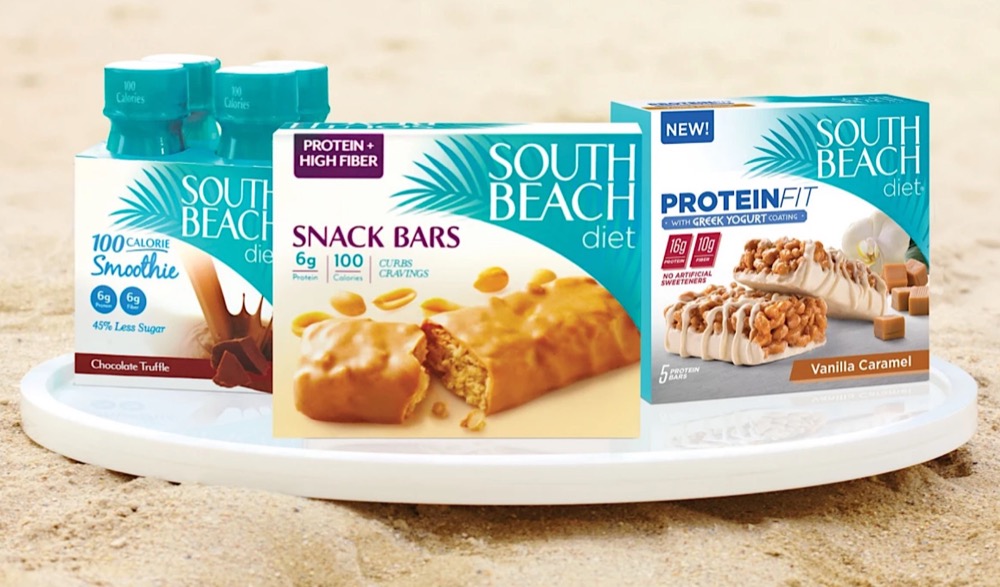
South Beach Diet snack bars in 2015. PHOTO: NewsWire
The South Beach Diet Now
The South Beach Diet has kept up with the times, adding new ideas like a keto-friendly version. When Nutrisystem bought the brand in 2015, it became even easier to follow the diet because they started offering prepared meals.
The South Beach Diet remains a trusted name thanks to its balanced and realistic approach to healthy eating. It stands out for promoting nutritious foods that fuel the body without sacrificing taste or diversity.
With a focus on lean proteins, vegetables, and healthy fats, it gives modern nutritional advice, and its phased plan not only aids in weight loss but also educates on maintaining a healthy weight with a flexible eating pattern.

The South Beach Diet encourages you to exercise regularly throughout all its phases, showing that staying active is key to a healthy life. This guide shows that the diet focuses on building long-lasting healthy habits, rather than just quick fixes for weight loss.
What People Are Saying
The South Beach Diet is a great option for people looking to get healthier and lose weight. Its approach of choosing high-quality carbs and fats instead of just focusing on calories makes it a practical choice for lasting weight management.
Diets
The 5-Factor Diet Plan
Megan Fox is one of many Hollywood stars who have tried the 5-Factor Diet and loved its simplicity and effectiveness.


Megan Fox is one of many Hollywood stars who have tried the 5-Factor Diet. PHOTO: Amaiaaa12
Understanding the 5-Factor Diet
The 5-Factor Diet has gained a lot of attention over the years. It was created by celebrity trainer Harley Pasternak.
This diet focuses on the number five. It includes five meals a day, five ingredients in each meal, and five workouts a week that last five minutes each. Many celebrities have followed this plan to stay in shape.
Pasternak developed this diet to help his celebrity clients achieve and maintain their fitness goals without the need for complicated meal plans or long, strenuous workout sessions.
By focusing on easy-to-prepare meals and brief, yet impactful exercises, the 5-Factor Diet offers a practical and manageable approach to healthy living.
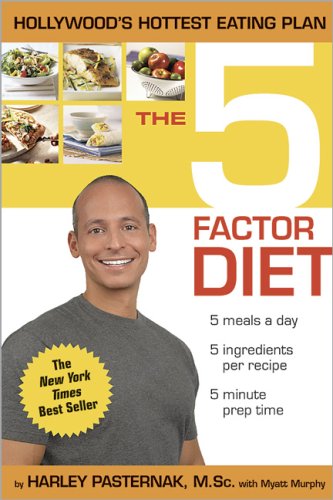
IMAGE: Amazon
The History of the 5-Factor Diet
Harley Pasternak created this diet to help people manage their weight and stay healthy. He has worked with many celebrities, helping them get in shape for movie roles and public appearances.
The diet became famous when Pasternak’s book “The 5-Factor Diet” was published. It was embraced by many in Hollywood and beyond.
Celebrities Who Follow the 5-Factor Diet
Many well-known celebrities have followed the 5-Factor Diet. Some of them include:
- Halle Berry
- Eva Mendes
- Alicia Keys
- Jessica Simpson
- Megan Fox
Many of these celebrities have praised the diet for its simplicity and effectiveness.

Chicken is a lean protein part of the 5-Factor Diet. PHOTO: Stock image
Typical Ingredients in the 5-Factor Diet
The diet uses simple, healthy ingredients. Here are some common ones:
- Lean proteins like chicken breast and fish
- Low-fat dairy products
- Whole grains such as quinoa and brown rice
- Fruits like berries and apples
- Vegetables like spinach, broccoli, and bell peppers
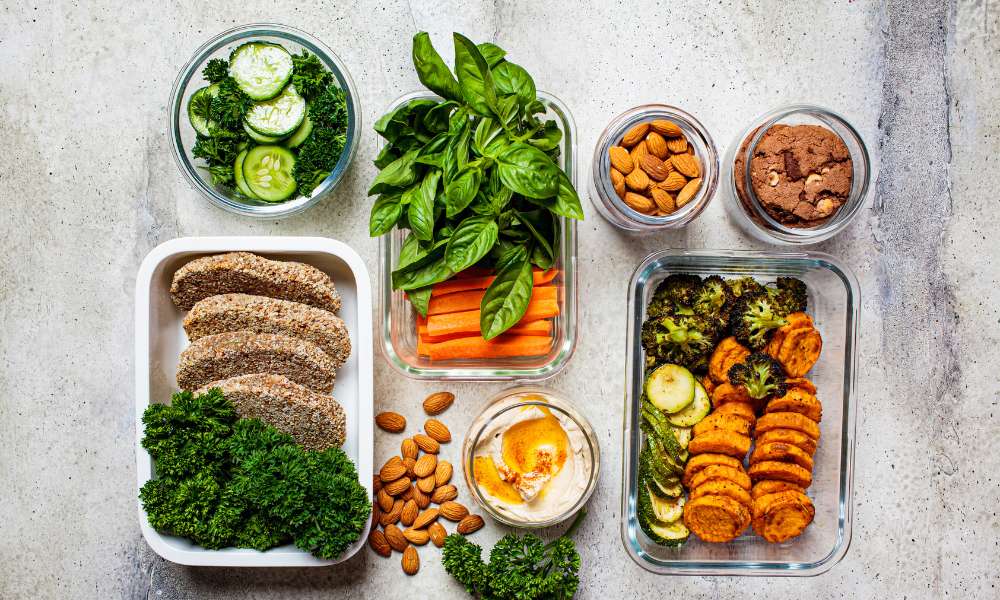
How the Diet Works
The 5-Factor Diet focuses on five meals a day. These meals keep you full and energized throughout the day. Each meal includes five ingredients. This makes meal prep easy and manageable.
A Day on the 5-Factor Diet
Here is an example of a day’s meals from a wide selection of recipes:
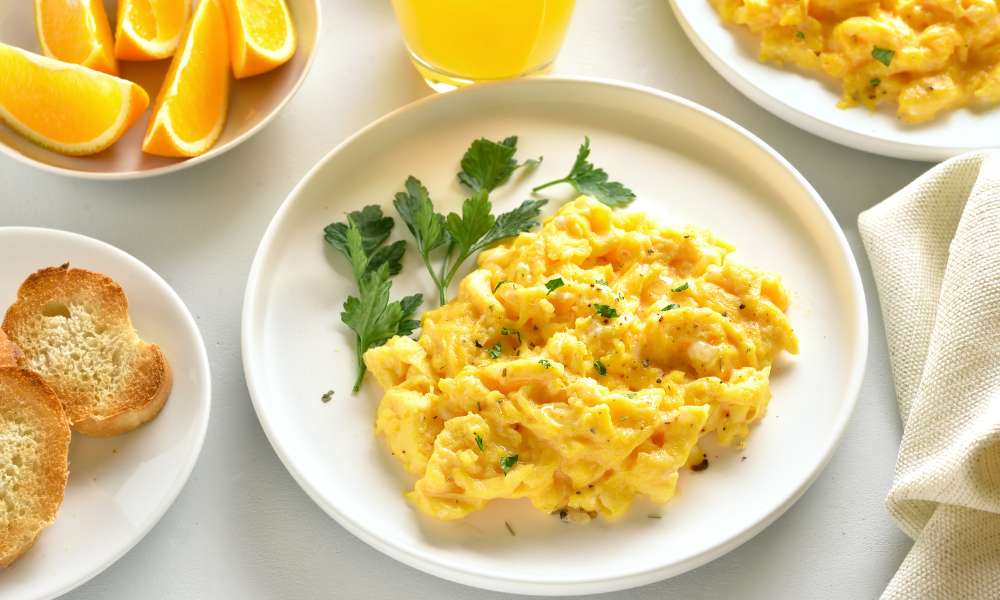
Scrambled eggs. PHOTO: Stock image
Breakfast:
- Scrambled eggs (2)
- Spinach (1 cup)
- Whole grain toast (1 slice)
- Berries (1/2 cup)
- Low-fat cheese (1 ounce)
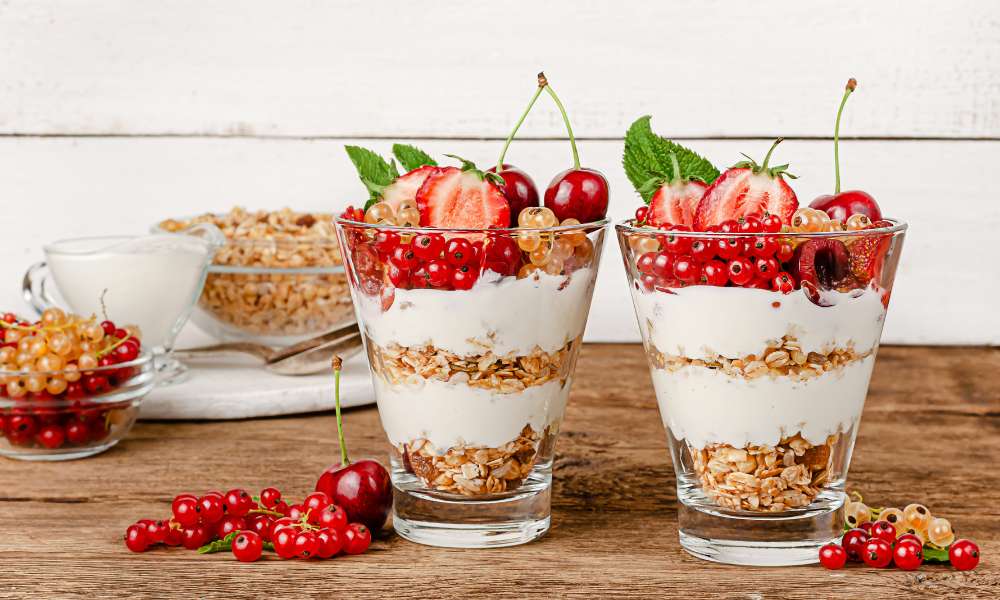
Greek Yogurt. PHOTO: Stock image
Mid-Morning Snack:
- Greek yogurt (1 cup)
- Honey (1 tablespoon)
- Almonds (10)
- Banana (1/2)
- Chia seeds (1 teaspoon)

Grilled chicken. PHOTO: Stock image
Lunch:
- Grilled chicken breast (4 ounces)
- Quinoa (1/2 cup)
- Broccoli (1 cup)
- Olive oil (1 tablespoon)
- Lemon juice (1 tablespoon)
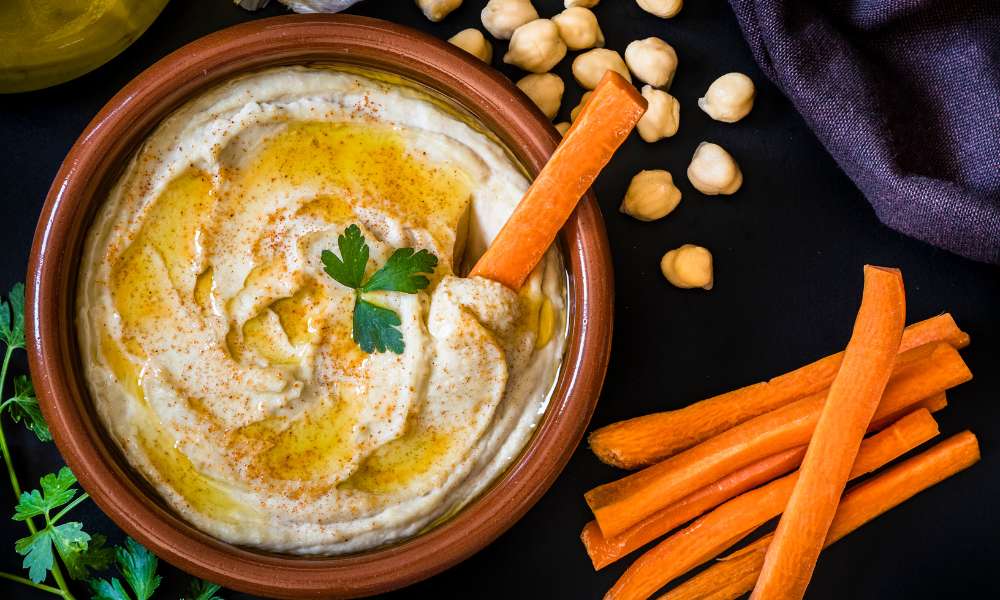
Hummus with carrot sticks. PHOTO: Stock image
Afternoon Snack:
- Cottage cheese (1/2 cup)
- Apple slices (1 medium apple)
- Carrot sticks (1 cup)
- Hummus (2 tablespoons)
- Pumpkin seeds (1 tablespoon)

Salmon and rice. PHOTO: Stock image
Dinner:
- Salmon (4 ounces)
- Brown rice (1/2 cup)
- Asparagus (1 cup)
- Avocado (1/2)
- Salsa (2 tablespoons)
Quantities and Portions
The diet is clear about portion sizes. Each meal should include:
- Proteins: 4-6 ounces
- Grains: 1/2 cup
- Vegetables: 1 cup
- Fruits: 1/2 cup
- Fats: 1 tablespoon
These quantities ensure you get the right amount of nutrients without overeating.

Push-ups are a part of the 5-Factor diet. PHOTO: Stock image
Workouts on the 5-Factor Diet
The workout plan is simple and fits easily into a busy schedule. It involves five exercises that take five minutes each. These exercises target different muscle groups.
Example Workout:
- Push-ups (1 minute)
- Squats (1 minute)
- Plank (1 minute)
- Jumping jacks (1 minute)
- Burpees (1 minute)
5 Food Quotes From Harley Pasternak

Pasternak emphasizes the importance of balanced nutrition and manageable workout routines. His insights into healthy eating and lifestyle choices have been widely shared in various interviews and publications.
Here are five notable quotes from Harley Pasternak about food, diet, and eating that capture his philosophy on maintaining a healthy and balanced lifestyle.
“You cannot out-exercise a bad diet.”
This quote underscores Pasternak’s belief that no amount of exercise can compensate for poor eating habits. He emphasizes the importance of balanced nutrition in conjunction with physical activity. (Source: BrainyQuote).
“A meal is not a meal and a snack is not a snack unless there is protein and fiber involved, so every time you sit down to eat make sure you include both.”
Pasternak advises that every eating occasion should contain both protein and fiber to ensure satiety and balanced nutrition. (Source: Reader’s Digest).
“I believe it’s because our over-the-top workout habits end up supercharging our appetites, ultimately causing us to consume even more calories than we would have if we’d stayed home and skipped the gym.”
Here, Pasternak discusses how excessive workouts can lead to increased appetite and calorie intake, which can undermine fitness goals. (Source: Reader’s Digest).
“Focus on what you should be eating rather than what you shouldn’t.”
Pasternak promotes a positive approach to diet, encouraging people to concentrate on healthy foods they should include in their meals rather than on foods to avoid. (Source: Hello! Magazine).
“Making fiber the centerpiece of your diet is one of the best ways to control your appetite and get more out of every calorie.”
Pasternak highlights the role of fiber in controlling hunger and optimizing calorie intake, recommending that it should be a central part of one’s diet. (Source: Reader’s Digest).
Why the 5-Factor Diet Stands Out
The 5-Factor Diet is unique because of its simplicity. It uses easy-to-find ingredients and straightforward recipes. The five-minute workouts fit into any schedule.
This diet is not about extreme restrictions but about balanced eating and regular exercise. Many people find it easy to stick to because it fits into their daily lives.

Halle Berry is another keen 5-Factor follower. PHOTO: Stock image
The Benefits of the 5-Factor Diet
This diet has several benefits:
– It helps with weight management
– It supports overall health
– It is easy to follow
– It includes a variety of foods, making it less likely to become boring.
Popular for a Reason
The 5-Factor Diet has become popular for a reason. Its simple rules and effective results have made it a favorite among celebrities and the general public alike.
By focusing on the number five, it provides a balanced approach to eating and exercising that many find sustainable in the long run.
Diets
The Keto Diet is popular with a celebrity following
The keto diet has become widely popular for weight loss and its potential to improve overall health and energy levels.

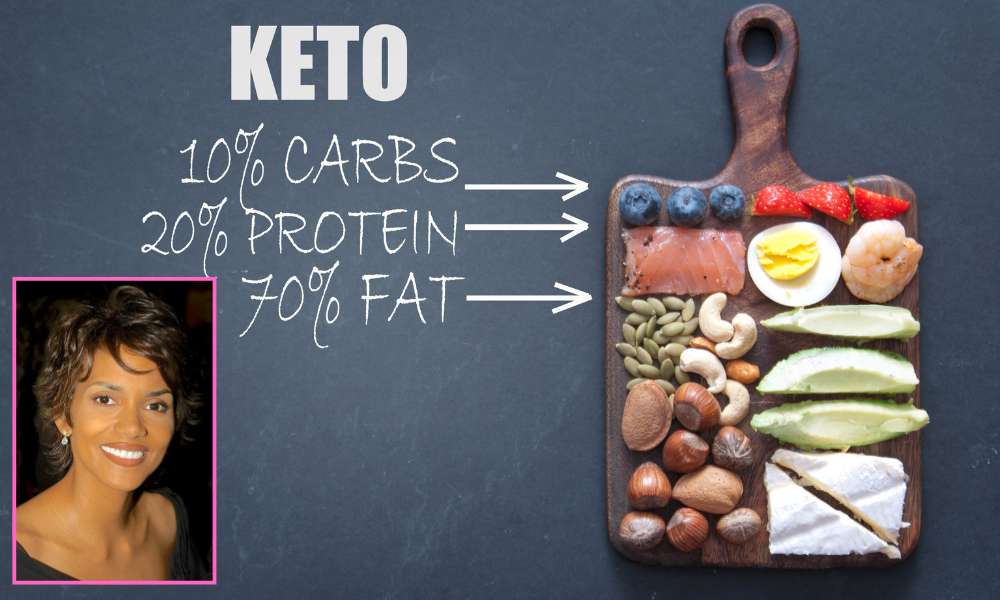
Halle Berry followed the Keto Diet for some time. PHOTO: Stock image
The ketogenic, or keto, diet is a nutritional approach centered around high-fat, moderate-protein, and very low-carbohydrate intake. This diet encourages the body to burn fats rather than carbohydrates, leading to a state known as ketosis.
The keto diet has become widely popular for weight loss and its potential to improve overall health and energy levels.
How Keto started
The keto diet has a fascinating history that dates back to the early 20th century. Initially developed as a medical diet to treat epilepsy in children, it mimicked the metabolic effects of fasting which also induces ketosis.

Dr. Russell Wilder at the Mayo Clinic was central in creating this diet, which offered an alternative to fasting by providing similar benefits through dietary adjustments.
Celebrities Who Eat Keto
The diet’s recent surge in popularity can partly be due to endorsements from high-profile celebrities.
The diet’s celebrity support has played a big role in the widespread acceptance and popularity of the keto diet:

Kim Kardashian: PHOTO: Love Lira Fashion
Kim Kardashian
Kim Kardashian turned to the keto diet primarily for weight management and to get in shape for events like the Met Gala. Her diet typically included foods like seafood, vegetables, and lean proteins. Kim has publicly discussed how the diet helped her lose weight effectively and feel more energetic.

LeBron James. PHOTO: All-Pro Reels/Joe Glo
LeBron James
NBA superstar LeBron James famously adopted a ketogenic-inspired diet during the 2014 off-season, which resulted in a significant weight loss that he showed off on social media. LeBron’s version of keto was quite strict, focusing heavily on high-quality proteins and eliminating sugars, dairy, and carbohydrates. He credited this diet for improved physical performance and recovery times.

Halle Berry. PHOTO: Jenn Deering Davis
Halle Berry
Actress Halle Berry is perhaps one of the most vocal proponents of the keto diet, which she uses to manage her diabetes and maintain good health. Berry has shared that the keto diet helps her maintain her energy levels, manage her health naturally, and stay in top shape. She often shares tips, recipes, and insights about her diet on social media, encouraging others to consider its health benefits.
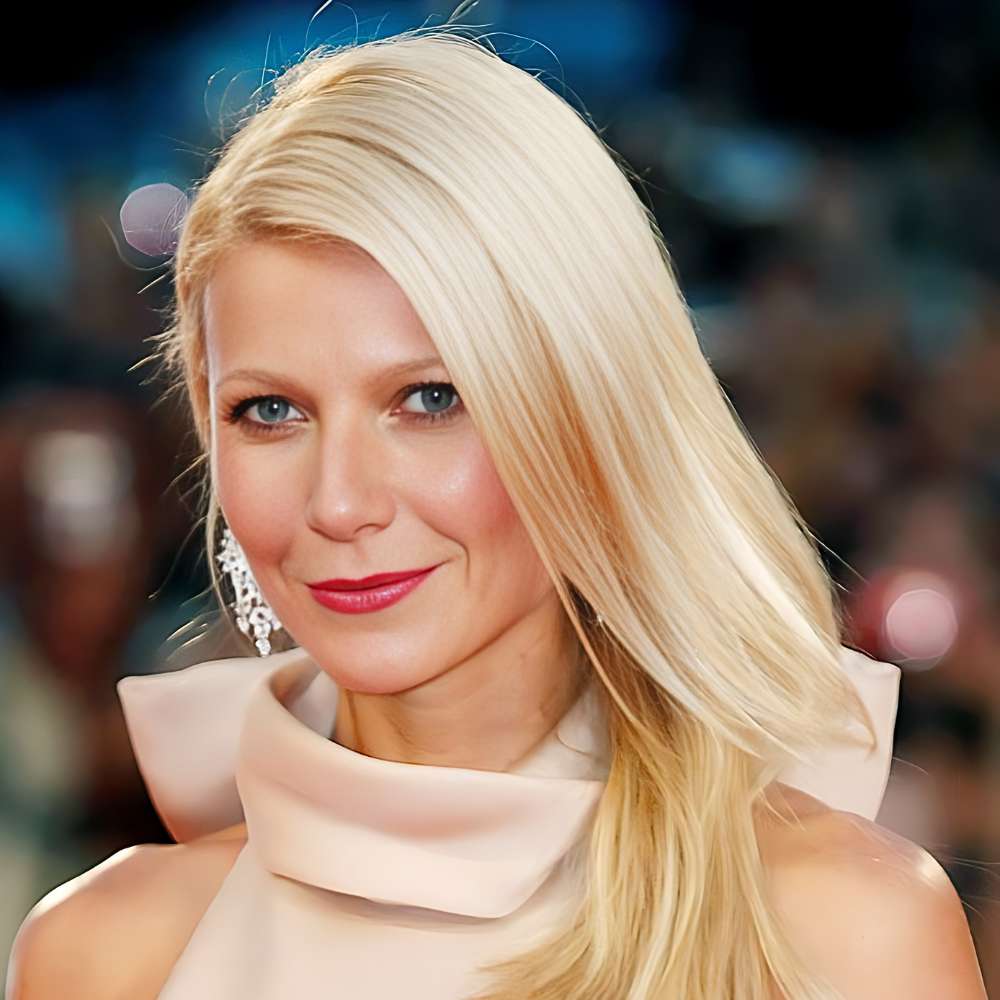
Gwyneth Paltrow. PHOTO: Andrea Raffin
Gwyneth Paltrow
Known for her health and wellness brand, Gwyneth Paltrow has also experimented with keto diet principles, integrating them into her broader dietary practices which focus on clean, healthy eating.

Joe Rogan. PHOTO: Todd Shapiro
Joe Rogan
Comedian and podcast host Joe Rogan has frequently discussed his experiences with the keto diet on his show, noting improvements in energy, mental clarity, and physical fitness. Rogan’s approach includes a mix of ketogenic and carnivore diet principles, focusing on high-fat and protein-rich foods.
Key Ingredients in a Keto Diet
Essential to the keto diet are foods that are high in healthy fats and low in carbohydrates. Staples include meats, cheeses, eggs, nuts, seeds, avocados, and leafy greens. These ingredients help maintain ketosis, a metabolic state where the body efficiently burns fat for fuel. It is crucial to avoid high-carb foods like grains, sugars, and high-carb fruits to sustain this metabolic state.
Essential Fats:
Avocados, coconut oil, butter, olive oil, and heavy cream.Proteins:
Meats, cheeses, eggs.Low-Carb Vegetables:
Nuts, seeds, leafy greens, broccoli, and cauliflower.Avoid:
High-carb foods such as grains, sugars, and high-carb fruits.
Science Supports Keto
The keto diet is supported by research that highlights its potential beyond weight loss. Studies have shown that it can:
- Improve insulin sensitivity
- Enhance mental clarity
- Support neurological health
The diet’s ability to reduce glucose levels and increase ketones in the blood can offer therapeutic benefits for conditions like epilepsy and diabetes.
Practical Keto
Sticking to the keto diet involves careful monitoring of food intake to ensure the right balance of macronutrients. These are typically
- 70-80% fats
- 20-25% proteins
- 5-10% carbohydrates
Keeping carbohydrate intake under 50 grams per day is essential to maintain ketosis. Quantities and servings vary depending on individual caloric needs, but the focus is always on high-fat, low-carb foods.

Keto Diet Ingredients. PHOTO: Stock image
Daily Keto Menu
For a well-rounded keto diet, it’s crucial to balance your meals with appropriate serving sizes of fats, proteins, and carbohydrates to maintain ketosis while ensuring nutritional adequacy. Here’s a guideline for serving suggestions on a typical keto diet day:
Breakfast
- Keto Coffee: 1 cup of coffee with 1 tablespoon of coconut oil, 1 tablespoon of butter, and 1 tablespoon of heavy cream.
- Scrambled Eggs: 2 large eggs scrambled with 1 ounce of cheese and a handful of spinach (about 1/2 cup).
Lunch
- Avocado Salad: 1 large avocado, 1/2 cup of cherry tomatoes, 1 ounce of feta cheese, over 2 cups of mixed greens. Dress with 2 tablespoons of olive oil and a splash of vinegar.
- Grilled Chicken: 4-6 ounces of chicken breast, seasoned and grilled.
Snack
- Almonds: About 1/4 cup of raw almonds.
- Cheese: 2 ounces of hard cheese like cheddar or gouda.
Dinner
- Salmon: 6-8 ounces of salmon, grilled or baked with a topping of your choice (1-2 tablespoons of a fat-based sauce like butter or garlic cream sauce is common).
- Asparagus: 1 cup of asparagus, roasted with 2 tablespoons of olive oil and seasoned with salt.
Dessert
- Keto Cheesecake: A serving size would typically be about 1 slice, assuming the cheesecake is made with ingredients that adhere to keto guidelines (like a base of almond flour and a filling of cream cheese and keto-friendly sweetener).
These serving suggestions aim to provide a balance of macronutrients suitable for the ketogenic diet, ensuring you consume enough fats and proteins while keeping carbohydrate intake low.
It’s also important to adjust quantities based on individual caloric needs, activity levels, and specific dietary goals.
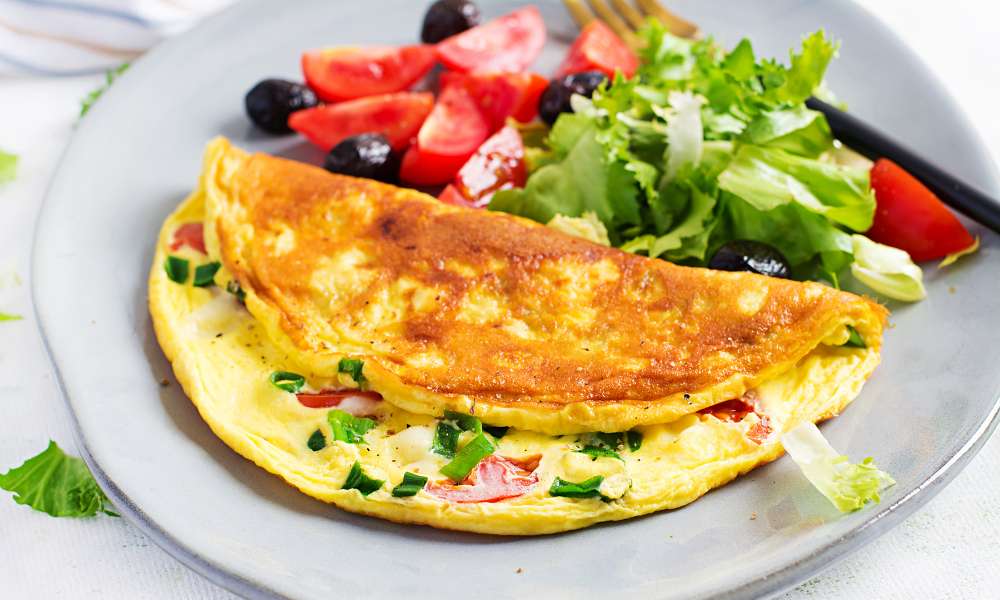
Keto Breakfast: Omelette with Cheese, Tomatoes, and Green Onions. PHOTO: Stock image
Follow These Keto Guidelines
When selecting ingredients for a ketogenic diet, there are several key rules to follow to ensure that the food choices support maintaining ketosis, the metabolic state where the body burns fat for fuel instead of carbohydrates.
Here are the main guidelines:
- Focus on High-Fat Ingredients: Choose foods that are high in healthy fats. This includes options like avocados, coconut oil, butter, heavy cream, and olive oil. These fats will be your primary source of calories.
- Moderate Protein Intake: Include moderate amounts of protein in your diet. Good sources are meats, fish, eggs, and some full-fat dairy like cheese. However, be cautious not to overconsume protein as it can be converted into glucose, which could potentially kick you out of ketosis.
- Limit Carbohydrates: This is a cornerstone of the keto diet. Aim to limit your carb intake to about 20 to 50 grams per day. Avoid foods that are high in sugars and starches, such as bread, pasta, rice, and sugary snacks. Instead, focus on vegetables that grow above ground like leafy greens, broccoli, cauliflower, and zucchini.
- Avoid Sugary Foods and Drinks: Completely cut out sugary sodas, candies, and other sweets. Also, be mindful of hidden sugars in sauces, dressings, and packaged foods.
- Be Cautious with Fruits: Most fruits are high in carbs and should be consumed sparingly. Berries are an exception; they can be enjoyed in small amounts as they are lower in carbs and high in fiber.
- Read Labels: When buying packaged foods, it’s crucial to read nutrition labels to check for hidden carbs and sugars. Look for foods with no added sugars and low net carbs.
- Choose Whole, Unprocessed Foods: As much as possible, choose whole, unprocessed foods to avoid hidden carbs and unhealthy additives. This not only helps maintain ketosis but also supports overall health.
By keeping to these rules, you can effectively manage your ketogenic diet, which means that you remain in ketosis to achieve your health and weight loss goals.

Diets
The Paleo Diet: What You Can and Can’t Eat
Explore the Paleo Diet with celebs! Discover the foods you can and can’t eat for a healthier lifestyle.
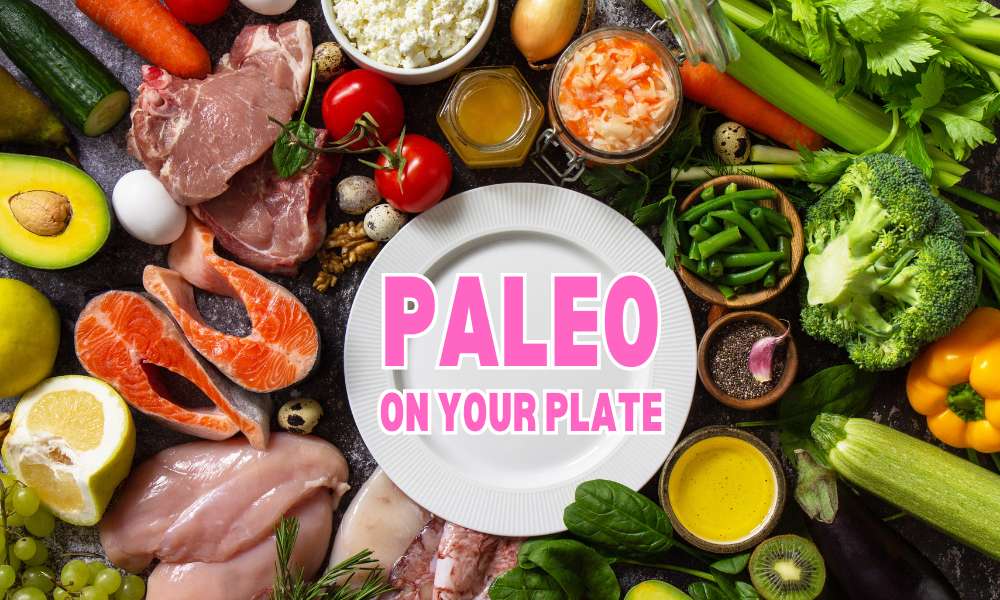
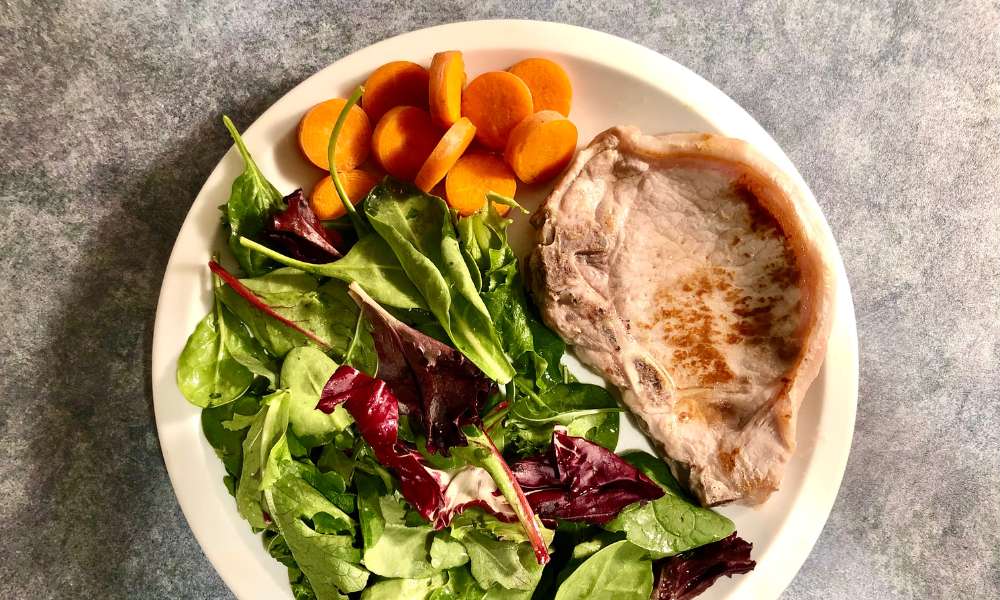
Paleo – healthy and good for weight loss. PHOTO: Stock image
Welcome to the exciting world of the Paleo Diet—a journey back in time to eat like our ancestors and enjoy numerous health benefits! This diet focuses on the basics: meats, fish, nuts, leafy greens, regional veggies, and seeds.
What Is The Paleo Diet?
So what is Paleo? Think of it as a way to eat from the earth, just as our predecessors did when they had to hunt and gather their food naturally.
The Paleo Diet is not just a fad; it’s a lifestyle that’s gaining popularity among celebrities and everyday folks alike who are committed to living healthier lives.

A Paleo meal looks delicious. PHOTO: Stock image
Paleo Benefits
Many people following this diet have found they feel more energetic, their skin clears up, and they lose weight naturally. It’s simple, wholesome, and packed with nutrients that keep you feeling full and vibrant.
Food Of The Future
The Paleo Diet, often called the “Caveman Diet,” has roots that go way back—literally to the Stone Age! It’s based on the idea that to achieve optimal health, we should eat more like our ancient ancestors, who relied on hunting and gathering.
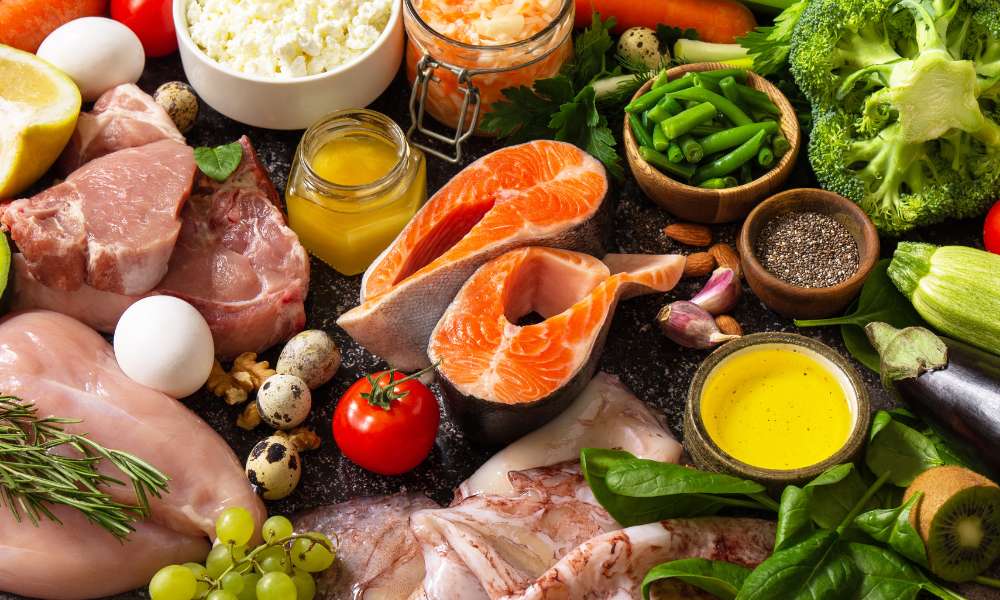
Paleo offers a wide range of food types for everyone. PHOTO: Stock image
This concept gained modern popularity in the 1970s thanks to the gastroenterologist Walter L. Voegtlin, and it has been refined and popularized by numerous scientists and authors since.
Follow The Cave Dwellers
The principle is straightforward: if the cave people didn’t eat it, neither should you. Over time, this diet has evolved with new research and insights, but the core idea remains the same—eat clean, natural foods and avoid processed items.
And it works today just as effectively as it did back in the past.
Matthew McConaughey – Turns to Paleo for its simplicity and the natural energy boost it gives, perfect for an active lifestyle.
Jessica Biel – Credits her clear skin and great physique to the Paleo diet, enjoying how it focuses on meats, nuts, and fruits.
Joe Rogan – Passionate about the diet’s fitness and health benefits, often discusses how it fits well with his active lifestyle.
Megan Fox – Chooses Paleo to maintain her health and wellness, emphasizing the importance of eating lean meats and vegetables.
Kobe Bryant – Followed a modified Paleo diet, focusing on high-quality proteins and vegetables to enhance performance and recovery.
Fresh Is The Key
The Paleo Diet is centered around whole foods that could be hunted or gathered. This includes a wide variety of meats like chicken, beef, and fish, which are staples of the diet. Vegetables—both leafy greens and starchy vegetables—are also crucial, alongside nuts, seeds, and fruits.
The key is in the freshness and quality of the food. Processed foods, dairy products, grains, and sugars are no-gos, emphasizing foods that are as close to their natural state as possible.
What Can You Eat On The Paleo Diet?
Meats: Includes beef, pork, lamb, chicken, turkey, and venison.
Fish and Seafood: Omega-3 rich choices like salmon, trout, shrimp, and various shellfish.
Vegetables: Features broccoli, spinach, kale, peppers, sweet potatoes, onions, and carrots.
Fruits: Variety includes apples, bananas, oranges, berries (strawberries, blueberries, raspberries), grapes, and melon.
Nuts and Seeds: Healthy fats and proteins from almonds, walnuts, sunflower seeds, pumpkin seeds, and flaxseeds.
Healthy Fats and Oils: Essential oils like olive oil, coconut oil, and avocado oil.
Eggs: Free-range or omega-3 enriched eggs.
Herbs and Spices: Includes garlic, turmeric, cinnamon, basil; salt and pepper in moderation.
Beverages: Consists of water, herbal teas, coconut water, and bone broth.
The Paleo Diet is enjoyed not only for its health benefits but also for its delicious and rich flavors. Imagine feasting on a grilled steak, fresh salads with nuts and seeds, or a berry mix for dessert—foods that are both nutritious and satisfying!

PHOTO: Stock image
What You Can’t Eat on Paleo
The Paleo diet emphasizes whole, unprocessed foods that resemble what might have been eaten during the Paleolithic era. Consequently, it restricts several modern foods and ingredients. Here are some of the main types of foods that are typically avoided on a Paleo diet:
- Grains: This includes wheat, oats, barley, rye, corn, and rice. The Paleo diet excludes grains because they were not part of the human diet before the advent of agriculture.
- Legumes: Beans, lentils, peanuts, and peas are avoided as they are considered hard to digest and contain anti-nutrients like lectins and phytic acid, which can interfere with nutrient absorption.
- Dairy Products: Most forms of dairy are excluded in the strict Paleo diet, including milk, cheese, yogurt, and butter, as they were not consumed by Paleolithic humans.
- Refined Sugars and High-Fructose Corn Syrup: Foods containing added sugars, such as sodas, candies, pastries, and various sweetened beverages, are not allowed.
- Processed Foods: Any food that is processed is typically avoided, which includes many types of pre-packaged snacks and convenience foods.
- Vegetable Oils and Trans Fats: Oils from grains and some seeds, such as soybean oil, corn oil, and others high in omega-6 fats, as well as margarine and other hydrogenated oils, are excluded.
- Artificial Sweeteners: Aspartame, sucralose, saccharin, and other non-natural sweeteners are not part of the Paleo diet.
- Most Alcoholic Beverages: Especially those processed with additives and sugars.
By eliminating these foods, the Paleo diet aims to reduce inflammation, support digestive health, and promote a nutrient-rich diet to improve overall health.

Approved! Paleo apple-cinnamon pancakes with berries and maple syrup. PHOTO: Stock image
Paleo Helps Health
One of the biggest appeals of the Paleo Diet is its potential health benefits. Many people find that by cutting out processed foods and focusing on high-quality meats and vegetables, they see significant improvements in their overall health.
These benefits can include better heart health due to a lower intake of processed foods and sugars, effective weight management because of higher protein and fiber intake, and even potential improvements in longevity.
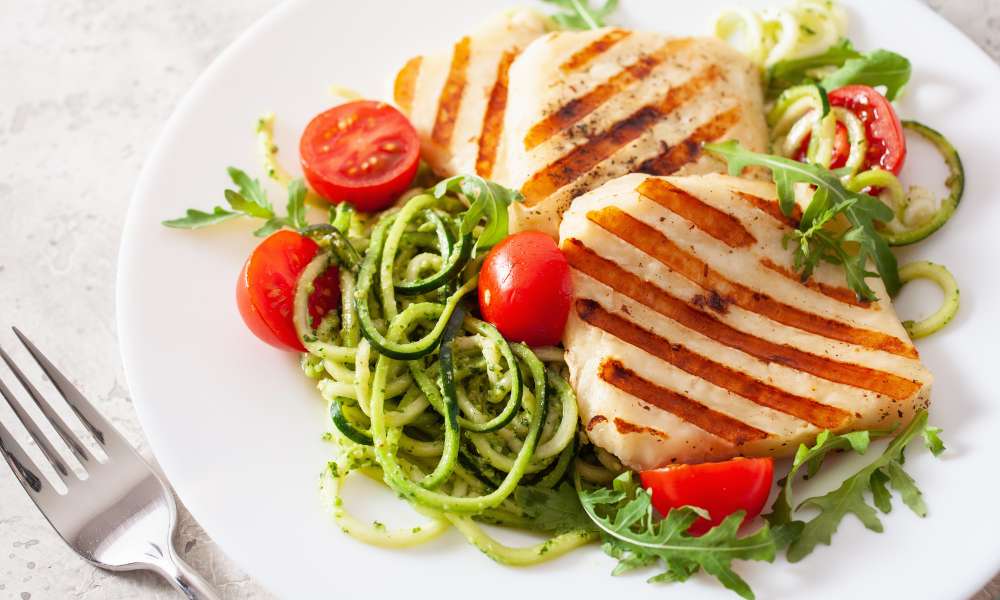
An appealing Paleo lunch. PHOTO: Stock image
Research suggests that eating more like our ancestors can decrease the likelihood of many modern diseases such as obesity, diabetes, and heart disease. By keeping it simple and clean, the Paleo Diet helps many maintain a healthy and active lifestyle.
A Typical Paleo Diet Day
A typical day on the Paleo Diet might start with eggs and vegetables fried in coconut oil, followed by a lunch of grilled chicken salad with a variety of nuts. For dinner, you might enjoy baked salmon with a side of asparagus.
Snacks could include a handful of berries or raw nuts, which are both Paleo-approved and delicious.
Incorporating these foods into daily meals is simpler than it might seem. Start with basic meats and vegetables and use herbs and spices to add flavor without calories.
Cooking at home can be a delightful adventure with these natural ingredients, and it’s also a great way to control what goes into your body.
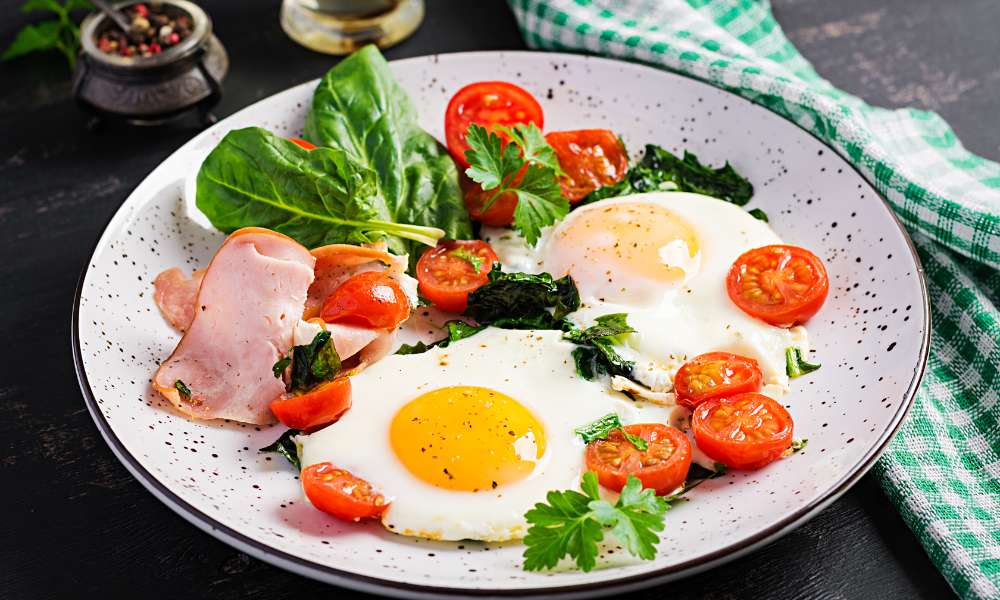
This Keto selection is very similar to a Paleo Diet meal. PHOTO: Stock image
Paleo vs Keto: Understanding the Benefits of Both Diets
The Paleo and Keto diets are two of the most popular lifestyle choices for those looking to enhance their health through nutrition. Each diet has its unique philosophy, benefits, and food lists that cater to different dietary needs and goals. Below, we explore the benefits of both diets and provide a comparison of the food items typically included in each.
Benefits of the Paleo Diet
The Paleo diet is based on the idea of eating like our ancestors, focusing on whole foods that were available to humans in the Paleolithic era. The benefits include:
- Increased Nutrient Intake: By focusing on whole foods, fruits, vegetables, and lean meats, the Paleo diet ensures a high intake of vitamins, minerals, and antioxidants.
- Reduced Processed Foods: Eliminating processed foods can lead to lower consumption of sugars and unhealthy fats, which helps in managing weight and improving overall health.
- Allergy Friendly: By avoiding dairy, grains, and legumes, the Paleo diet can be suitable for those with allergies related to these foods.
Benefits of the Keto Diet
The Keto diet emphasizes high-fat, moderate protein, and low carbohydrate intake to push the body into a state of ketosis, where it burns fat for fuel. The benefits include:
- Weight Loss: Ketosis naturally helps the body burn fat, which can lead to significant weight loss.
- Controlled Blood Sugar Levels: The low carb intake can help stabilize blood sugar levels, which is beneficial for individuals with diabetes.
- Mental Clarity: Some adherents report enhanced mental clarity and focus due to stable blood sugar levels.
Comparison Table: Paleo vs Keto Food List
Meats: Includes beef, pork, lamb, chicken, turkey, and venison.
Fish and Seafood: Omega-3 rich choices like salmon, trout, shrimp, and various shellfish.
Vegetables: Features broccoli, spinach, kale, peppers, sweet potatoes, onions, and carrots.
Fruits: Variety includes apples, bananas, oranges, berries (strawberries, blueberries, raspberries), grapes, and melon.
Nuts and Seeds: Healthy fats and proteins from almonds, walnuts, sunflower seeds, pumpkin seeds, and flaxseeds.
Healthy Fats and Oils: Essential oils like olive oil, coconut oil, and avocado oil.
Eggs: Free-range or omega-3 enriched eggs.
Herbs and Spices: Includes garlic, turmeric, cinnamon, basil; salt and pepper in moderation.
Beverages: Consists of water, herbal teas, coconut water, and bone broth.
Meats: Includes fatty cuts like ribeye, pork belly, and lamb chops.
Fish and Seafood: High-fat options such as salmon, mackerel, and sardines.
Vegetables: Low-carb options like spinach, kale, broccoli, and cauliflower.
Dairy: High-fat choices like cheese, cream, and butter.
Nuts and Seeds: Includes macadamias, almonds, pecans, and chia seeds (in moderation).
Healthy Fats and Oils: Emphasizes MCT oil, butter, coconut oil, and other saturated fats.
Eggs: Whole eggs are a staple in the Keto diet.
Herbs and Spices: All herbs and spices are allowed, keeping an eye on carb counts.
Beverages: Focus on water, coffee, and tea (without sugar).
Starting Paleo
Adapting the Paleo Diet to fit various lifestyles is easier than you might think. Start with meal planning, focusing on fresh, seasonal ingredients that don’t require complex preparation.

PHOTO: Stock image
When grocery shopping, stick to the outer aisles of the store where fresh produce, meats, and seafood are typically located. Dining out? Look for dishes that focus on simple, whole foods and ask for modifications as needed.
The Paleo Diet is more than just a way of eating; it’s a way to live a healthier, happier life. So, why not give it a go? You might just find it’s the perfect fit for you.
Diets
The Vegan Diet attracts A-list celebrities for a reason
Imagine a way of eating that fills your plate with colorful vegetables, hearty grains, and flavorful fruits…

Picture your plate brimming with vibrant veggies, wholesome grains, and juicy fruits.
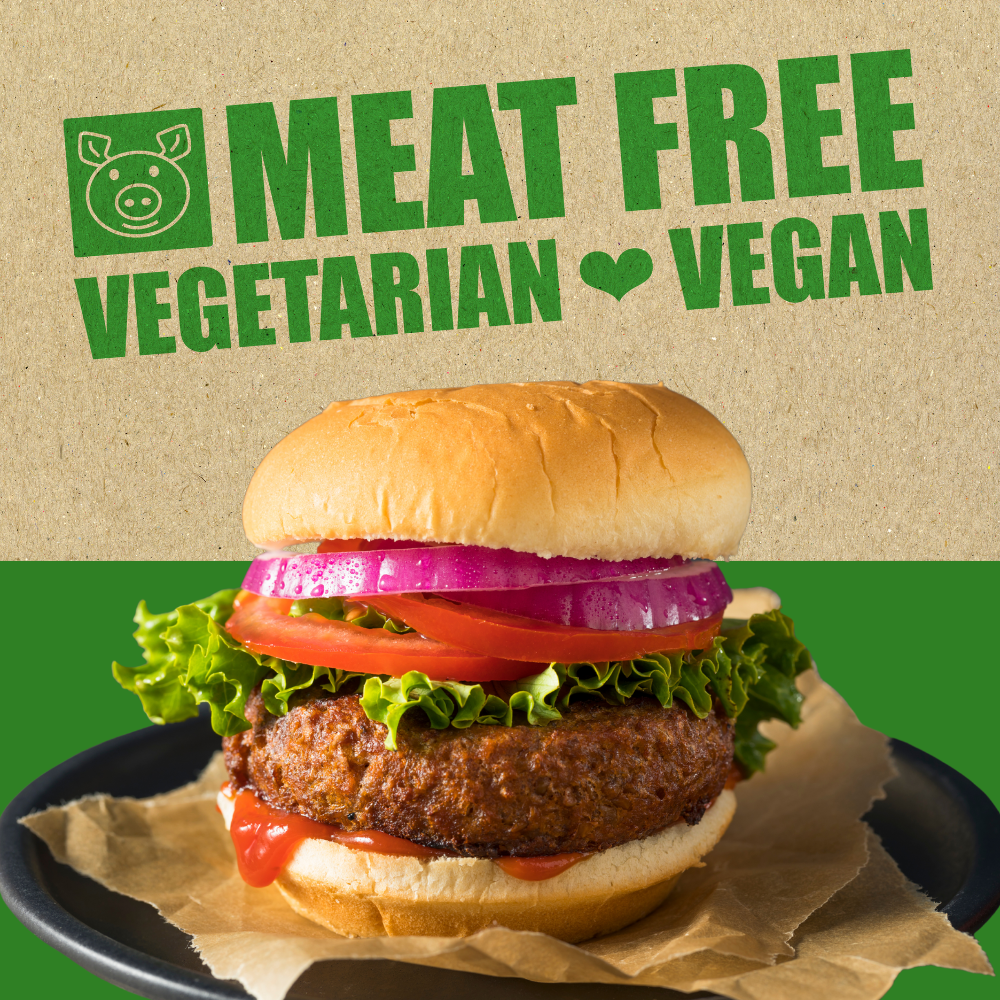
PHOTO: Stock file
What is the Vegan Diet
Think of a mealtime where your dish is packed with a rainbow of vegetables, robust grains, and luscious fruits. That’s the vegan diet. It means enjoying meals without animal products. People choose this way of eating for many reasons, including care for animals, the planet, or their own health.
Eating with a Purpose
The vegan diet is all about making choices that feel good for your body and the world around you. It’s about saying yes to plant-based foods and finding new favorites along the way. From crunchy carrots to smooth avocados, the variety is endless.
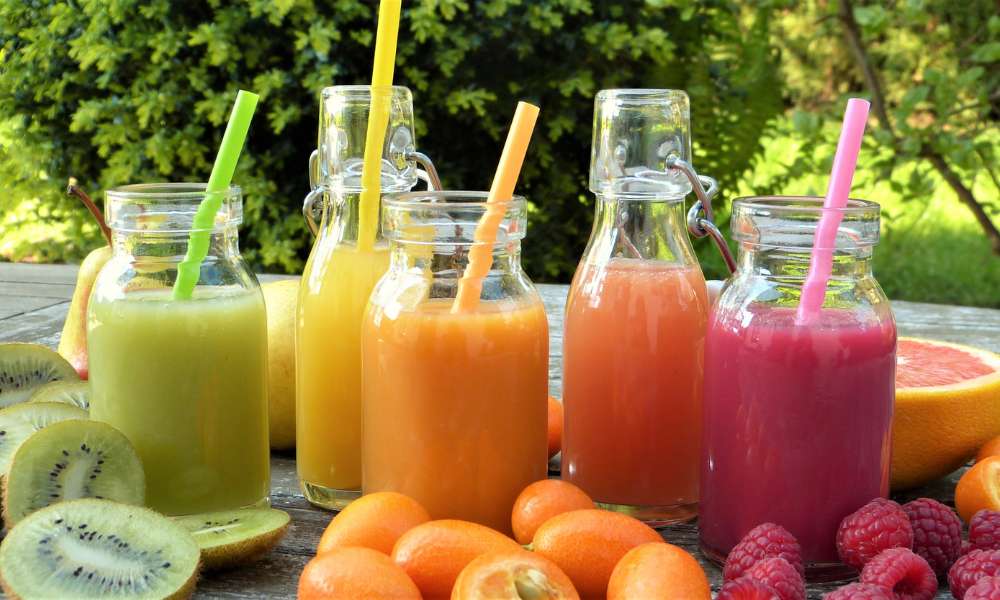
PHOTO: Stock file
Good for All
Choosing plant-based foods can be a big step toward taking better care of our planet and the animals that share it with us. It’s also a way to explore new tastes and recipes. Whether you’re making a smoothie or baking a sweet treat, there are so many ways to enjoy vegan food.
In a Nutshell
This brief peek into the vegan diet shows it’s not just about what you don’t eat, but also about the delicious and nutritious foods you do eat. It’s a choice that connects your meals to your values, and it’s a path more people are choosing to explore every day.

Natalie Portman was an early adopter of veganism. PHOTO: © European Union, 2024
Celebrities Who Eat Vegan
Stars Shining Bright on Plants
The vegan diet is making waves in the glamorous world of celebrities. Figures like Rooney Mara and her sister Kate Mara have embraced plant-based living, highlighting their love for animals and the environment.
Natalie Portman, an early adopter, has been vocal about her vegan journey, inspired by her passion for animal rights.
Healthy Living in the Limelight
Actors like Cillian Murphy and Nathalie Emmanuel have noted significant health improvements since adopting a vegan lifestyle. Their experiences underscore how this diet boosts energy, improves skin clarity, and enhances performance.
Even sports stars like Lewis Hamilton and Venus Williams credit veganism for better energy levels and managing health conditions, proving the diet’s impact goes beyond just ethical concerns.

Cillian Murphy. PHOTO: Elena Ternovaja
A Menu of Stars
The vegan diet is endorsed by celebrities from diverse fields. Lizzo, will.i.am, and Woody Harrelson not only share their favorite vegan recipes but also discuss how this lifestyle choice aligns with their values.
Sadie Sink and Madelaine Petsch, inspired by their peers, have also become vocal advocates for veganism.
The Impact Beyond the Plate
And celebrities like Bella Ramsey and Richa Moorjani advocate for veganism not just for its health benefits but for its positive impact on the planet.
Their stories inspire fans and highlight the significant environmental benefits of plant-based eating.

Daniella Monet. PHOTO: NickRewind
Celebrities as Vegan Ambassadors
Celebs like Daniella Monet and Romesh Ranganathan are using their spotlight to chat about why they love veganism, reaching people through all kinds of media.
They’re not just talking about their own choices; they’re sparking conversations about making choices that are kinder to the planet and all its inhabitants. It’s all about spreading the word for a bigger, positive shift.

Breakfast can be bananas and berries. PHOTO: Stock
Daily Vegan Menu
A Breakfast of Fruits and Vegetables
In a vegan diet, fruits and vegetables are the stars. Imagine starting your day with a smoothie made from ripe bananas, berries, and spinach.
For lunch, a salad packed with different veggies.
Dinners could include a hearty vegetable stew. Each fruit and vegetable brings its own set of vitamins and minerals, ensuring your meals are as nutritious as they are colorful.

A delicious vegan stew. PHOTO: Stock
Grains as Everyday Essentials
Grains form the backbone of many vegan meals, providing essential carbs for energy.
Breakfast might feature oatmeal topped with fruit and nuts. For lunch, a quinoa salad offers a protein boost.
Dinner could center around a brown rice and vegetable stir-fry. These grains are not just fillers; they’re nutritional powerhouses that support a healthy lifestyle.
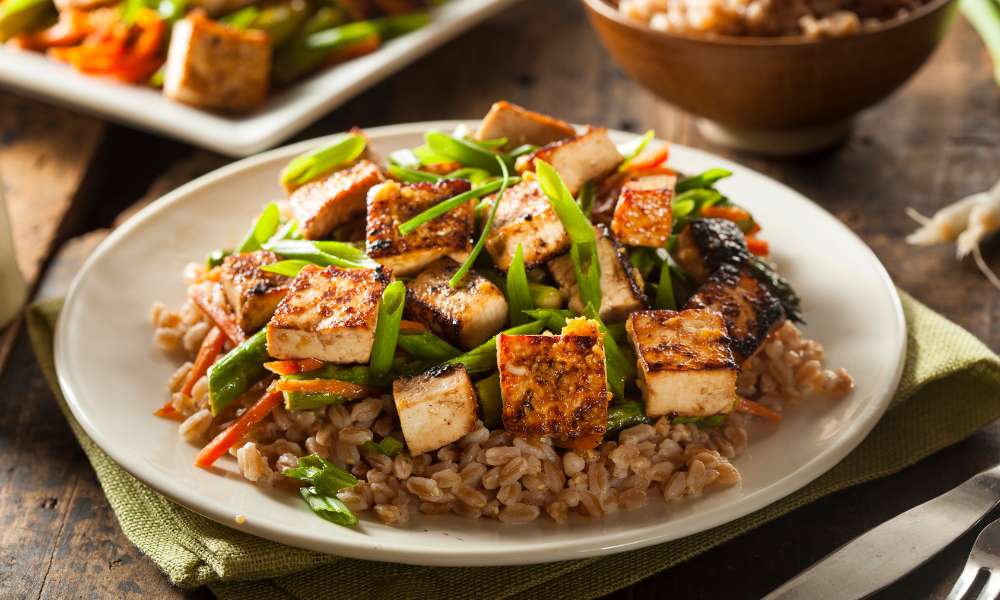
Vegetable stir-fry. PHOTO: Stock file
The Mighty Nuts and Seeds
Nuts and seeds add crunch and nutrition. They’re great as snacks, sprinkled over salads, or blended into sauces. Almonds, walnuts, chia seeds, and flaxseeds are rich in omega-3 fatty acids and protein. They can transform a simple dish into something special and nutritious.
Legumes: The Vegan Protein Source
Legumes are crucial for protein in a vegan diet. They can be made into a variety of dishes, like black bean tacos, lentil soup, or chickpea curries.
Besides protein, they offer fiber, iron, and other nutrients. They’re a versatile group of foods that can be adapted to any taste, ensuring your vegan meals are always exciting and fulfilling.
By focusing on these key ingredients, you can create a wide array of tasty and nourishing vegan dishes.
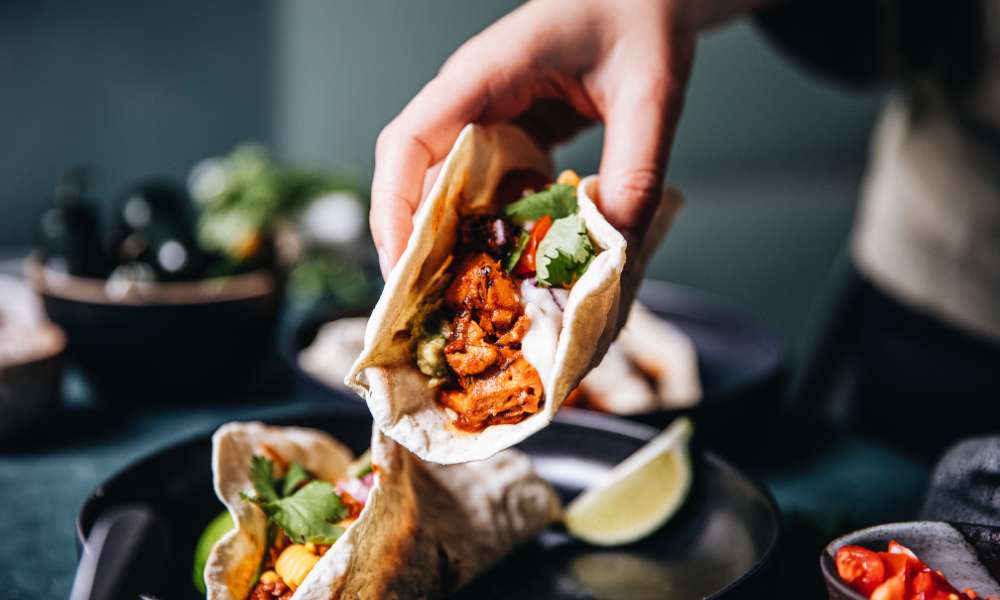
Vegan taco. PHOTO: File
Serving Suggestions
For a well-rounded vegan diet, it’s crucial to balance both macronutrients (proteins, fats, carbohydrates) and micronutrients (vitamins, minerals).
- Legumes, including beans and lentils, are excellent protein sources, vital for muscle repair and growth.
- Iron, necessary for blood health, can be found in leafy greens like spinach and kale.
Include a variety of these foods across meals to meet daily nutritional needs.
For instance, incorporating a serving of legumes (about 1/2 cup cooked) and leafy greens (1 cup raw) into your daily meals can help ensure a balanced intake of essential nutrients.

PHOTO: File
How To Go Vegan
Moving to a vegan diet involves slowly incorporating plant-based foods while finding alternatives for animal products.
- Start by introducing one vegan meal a day, utilizing meal planning to ensure nutritional balance. Explore plant-based protein sources such as beans, lentils, and tofu.
- Research dairy and meat substitutes to diversify your meals.
- Educate yourself on vegan nutrition to avoid deficiencies.
- Finally, join online communities for support and recipe ideas, making the transition enjoyable and sustainable.

Vegan Joaquin Phoenix on the red carpet in 2018. PHOTO: Harald Krichel,
Celebrity Quotes
Here are some thoughts from celebrities on their transition to a vegan diet. These quotes offer insights into the reasons and benefits behind their choice of a plant-based lifestyle.
Jermaine Dupri shares his long-term commitment to veganism, emphasizing the positive feelings and contributions to animal welfare and environmental health it brings: “I’ve been vegan for over a decade, and for me, there’s nothing better for feeling your best and knowing you’re helping the planet and animals.” (PETA).
Mayim Bialik recalls her childhood discomfort with eating animals and her realization that she could make different choices: “Even as a child, I felt very guilty about eating animals and never knew that there was something to do about it. And as I got older, it became clearer that there are things that I can do and choices I can make.” (PETA).

Actress Mayim Bialik. PHOTO: Mingle MediaTV
Sadie Sink was influenced by her work with Woody Harrelson and immediately transitioned to veganism after learning about the dairy and egg industries: “I actually was a vegetarian for about a year and when I was working on The Glass Castle with Woody Harrelson, He and his family inspired me to become a vegan.” (LIVEKINDLY)
Ariana Grande emphasizes a plant-based diet’s role in her happiness and longevity, as well as her love for animals: “I am a firm believer in eating a full plant-based, whole food diet that can expand your life length and make you an all-around happier person.” (PETA).
Joaquin Phoenix speaks on the broader implications of veganism, connecting it to various forms of injustice and advocating for a more compassionate worldview: “I think that we’ve become very disconnected from the natural world. And many of us, what we’re guilty of, is an egocentric worldview, the belief that we’re the center of the universe.” (PETA).

Lewis Hamilton. PHOTO: Emperornie
Five more celebrities who embraced veganism may surprize you:
Woody Harrelson emphasizes his long-term vegan diet focusing on raw foods for energy and not just ethical reasons (LIVEKINDLY).
Peter Dinklage transitioned to veganism after 15 years as a vegetarian, using his platform to advocate for better animal treatment (LIVEKINDLY).
Tony Kanal made the switch to veganism after realizing the cruelty of the dairy industry, especially after having his first child (LIVEKINDLY).
Lewis Hamilton went vegan for ethical reasons, highlighting the importance of using one’s voice for change (LIVEKINDLY).
Mýa discusses the environmental and health benefits of veganism, emphasizing the drastic water usage in beef production (LIVEKINDLY).

PHOTO: Stock file
The Vegan Diet Answer
A vegan diet can lead to improved health outcomes, including lower risk of heart disease, hypertension, type 2 diabetes, and certain cancers.
It also has been said to have a positive impact on the environment by reducing carbon footprint, conserving water, and minimizing land use for animal agriculture. And for animal lovers, it promotes animal welfare by avoiding making products from them.
Diets
Does the Mediterrean Diet boost longevity for many celebrities?
For longevity and good health, this is the diet for you…

Imagine filling your plate with a rainbow of fruits and veggies, scooping up a hearty serving of whole grains like brown rice or quinoa, and drizzling it all with a generous glug of olive oil.
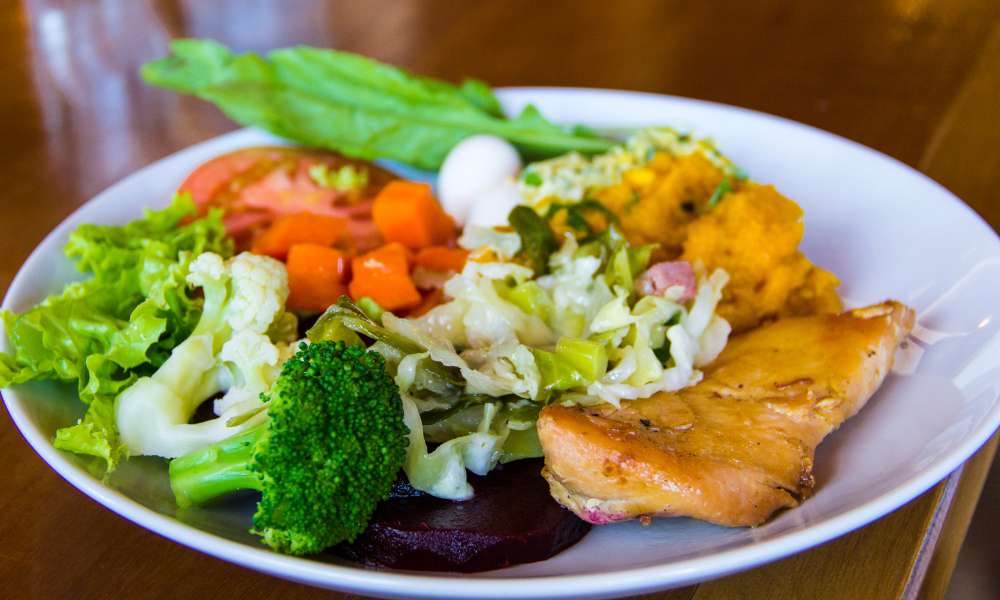
That’s the Mediterranean Diet in a nutshell. It’s all about embracing foods that are as close to their natural state as possible.
Many celebrities follow the Mediterranean Diet for its health benefits and as part of a lifestyle choice, emphasizing balance, quality ingredients, and enjoyment of food.
Selena Gomez – Emphasizes a diet rich in veggies, proteins, and whole grains for energy and stamina.
Penélope Cruz – Follows the diet due to its closeness to Spanish cuisine, focusing on fruits, vegetables, and quality proteins.
John Goodman – Lost significant weight by incorporating more plant-based foods and lean proteins into his diet.
Cameron Diaz – Advocates for the diet’s principles of balance and nutrition in her books.
Brooke Burke – Maintains health with lean meats, fish, vegetables, and olive oil as diet staples.
Catherine Zeta-Jones – Enjoys Mediterranean-style salads as a significant part of her diet.
Jennifer Garner, Elizabeth Hurley, Isla Fisher, and Heidi Klum – All linked to adopting the Mediterranean way of eating for its health benefits.
Why is olive oil used in the Mediterranean Diet? Well, apart from making everything taste better, it’s packed with heart-healthy fats that keep our cholesterol in check and our hearts ticking happily.

And let’s not forget nuts, seeds, and avocados, which are like the cool uncles of the fat family, bringing in all the good vibes without the drama of unhealthy fats.
Fish and Poultry Take Center Stage
Now, when it comes to what’s on the menu for protein, fish and chicken get the VIP treatment. Think of them as the main characters, with red meat making a cameo only once in a while.
Fish, especially the fatty kinds like salmon, are the stars because of their omega-3 fats, which are like brain food that also keeps our hearts running smoothly.

And as for chicken, baking or grilling it keeps things light and tasty.
So, why the side-eye for red meat? It’s not that it’s a villain, but it’s kind of like that guest who’s fun at parties but you wouldn’t want living with you. A little goes a long way, especially for keeping our hearts in shape and our planet happy.
Flavor Without the Salt
One of the coolest tricks of the Mediterranean Diet is using herbs and spices to jazz up meals instead of leaning on salt. It’s like having a flavor party where everyone’s invited: garlic, onions, basil, rosemary, you name it.

Not only do they make dishes sing, but they also let us wave goodbye to too much sodium, which is great news for our blood pressure.
The Star Players in Your Kitchen
Jumping into the Mediterranean Diet feels like being invited to a never-ending garden party. It’s all about celebrating the natural flavors and health benefits of some pretty amazing ingredients.

Let’s meet the VIPs of this culinary fiesta:
- Olive Oil: Think of it as the liquid gold of the kitchen. It’s the go-to for cooking, dressing, and drizzling over pretty much everything. Rich in healthy fats, it’s good for your heart and tastes divine.
- Fruits, Vegetables, Whole Grains, and Legumes: This is your color palette for creating vibrant, nutritious meals. These foods are packed with vitamins, minerals, and fiber. They’re the backbone of the diet, keeping your body fueled and your taste buds happy.
- Fish and Seafood: Here’s where you get your protein fix. From salmon to sardines, seafood is a big deal because it’s loaded with omega-3 fatty acids, which are great for your brain and heart.
- Dairy: Especially the fermented kinds like yogurt and cheese, dairy is in, but in moderation. It’s all about getting that calcium and protein without going overboard. Plus, fermented dairy is great for your gut health.
- Red Meat and Processed Foods: These guys are more like the party crashers. They’re not the main attraction and show up only occasionally. Keeping them to a minimum is key to keeping the heart-healthy vibes going.
What’s Cooking? Sample Meals to Make You Drool
Imagine starting your day with a breakfast that actually makes you want to get out of bed. Lunch and dinner are equally inviting, showcasing the freshest ingredients of the season.

Here’s what a day on the Mediterranean menu might look like:
- Breakfast: A slice of whole-grain toast topped with avocado, a drizzle of olive oil, and a sprinkle of sea salt. Pair it with a side of fresh fruit and a dollop of Greek yogurt.
- Lunch: A mixed salad loaded with leafy greens, cherry tomatoes, cucumbers, olives, and feta cheese, dressed in olive oil and lemon juice. Serve it with a slice of whole-grain bread.
- Dinner: Grilled salmon or baked sea bass with a side of quinoa tossed with roasted vegetables. Finish with a simple fruit salad for dessert.
Seasonal and Local: The Secret Ingredients
The beauty of the Mediterranean Diet is its reliance on what’s in season and locally available. This not only ensures that your meals are packed with flavor but also supports sustainable eating habits.
Spring might bring dishes with asparagus and strawberries, while summer calls for tomatoes and peaches. Each season has its stars, and the Mediterranean Diet lets them shine.
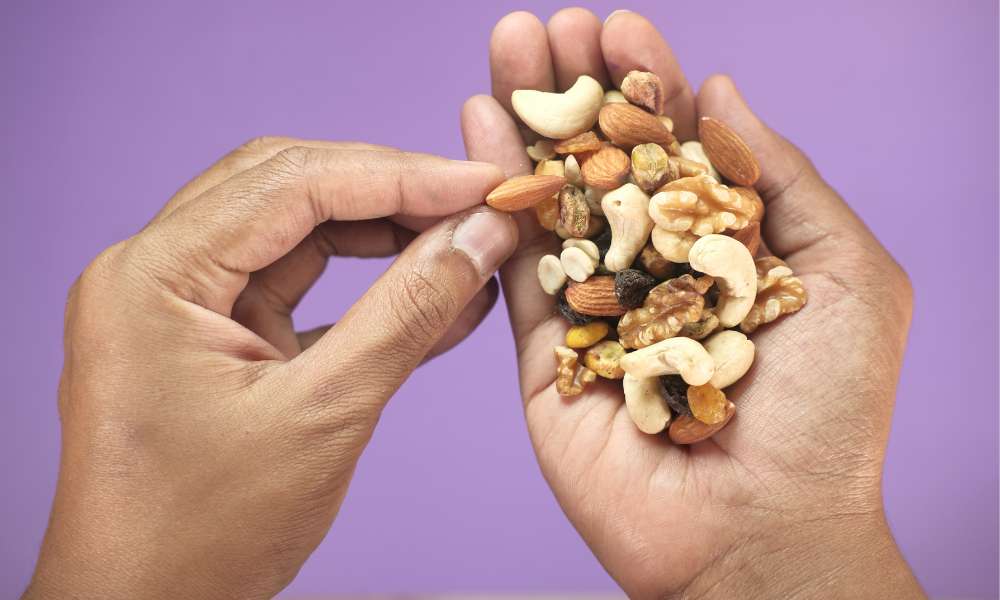
Making It Work for You
Incorporating Mediterranean dishes into any diet is easier than you think. Start with swapping out your cooking fats for olive oil.
Experiment with meatless meals a few times a week, opting for legumes or fish instead. Snack on nuts and fruits instead of processed goodies.
And most importantly, enjoy your meals with others when you can. Food tastes better when shared, after all.
A Toast to Moderation
And then there’s red wine, often seen sashaying around the Mediterranean table. The secret is in sipping it like you’re savoring a fine piece of art, not downing it like water.

A glass with dinner can actually be good for your heart, thanks to the antioxidants. But if wine’s not your thing, no worries. The Mediterranean Diet doesn’t hinge on it. It’s all about enjoying your meals and the company you’re with.
The Proof is in the Olive Oil
Let’s see why everyone’s buzzing about the Mediterranean Diet. It’s not just because it gives us an excuse to enjoy more hummus (though, that’s a perk). Science has given it a big thumbs up, and here’s why:

Researchers have been snooping around kitchens from Greece to Italy, trying to figure out why folks in the Mediterranean region tend to live longer, healthier lives.
What they’ve found is pretty compelling. It turns out, the diet these people follow is like a secret sauce for good health.
Heart Health: A Love Story
First off, let’s talk about the heart – the star of the show. This diet is like a love letter to your heart. Studies have shown that following the Mediterranean way of eating can lead to lower cholesterol levels, reduced blood pressure, and a decreased risk of heart disease.
It’s the omega-3s from fish, the antioxidants in fruits and veggies, and the healthy fats in olive oil that team up to keep your ticker ticking nicely.

Weight Management and Diabetes: The Balancing Act
Now, onto managing weight and keeping blood sugar levels in check. The Mediterranean Diet isn’t a “diet” in the sense of something you go on to drop a few pounds quickly.
It’s more about a lifestyle that helps you maintain a healthy weight in a way that doesn’t make you feel deprived. Thanks to all the fiber from whole grains and veggies, you feel full longer, which means less snacking on junk food.
For folks dealing with diabetes or at risk of developing it, this diet is like a superhero. It’s brilliant at helping control blood sugar levels because it’s low in processed sugars and refined carbs, which are the usual culprits behind those unwanted spikes.

Brain Power: Keeping Sharp
But wait, there’s more! Your brain loves this diet too. Research suggests that the Mediterranean Diet could be a shield against cognitive decline as we age, keeping our minds sharper for longer.
It could even reduce the risk of developing conditions like Alzheimer’s. Think of it as brain food that keeps your neurons dancing.
Wrapping It Up
So, what’s the secret behind the Mediterranean Diet’s success? It’s a mix of wholesome ingredients, the balance of nutrients, and, let’s not forget, the joy of eating tasty meals that don’t feel like a sacrifice.
When science says that enjoying a plate full of colors, savoring a piece of fish drizzled with olive oil, and even indulging in a glass of red wine can keep our hearts pumping, our waistlines in check, and our brains bright, it’s a no-brainer.

The Mediterranean Diet: Your Questions Answered
Q1: Is the Mediterranean diet suitable for vegetarians?
Absolutely! The Mediterranean diet is a vegetarian’s dream. It naturally emphasizes plant-based foods like fruits, vegetables, grains, nuts, seeds, and legumes. Fish and dairy are part of the diet but can easily be substituted or omitted for a fully vegetarian or even vegan lifestyle. The variety and flexibility make it a great fit for those looking to maintain a vegetarian diet with plenty of flavors.
Q2: Can the Mediterranean diet help with weight loss?
Yes, it can! While the Mediterranean diet isn’t designed as a weight loss program, its emphasis on whole foods and healthy fats can naturally lead to a calorie deficit and weight loss. Plus, foods high in fiber (think veggies, fruits, and whole grains) can keep you feeling full longer, helping you eat less without feeling deprived. Remember, portion control and listening to your body’s hunger cues are key.
Q3: How does the Mediterranean diet compare to other popular diets?
The Mediterranean diet stands out for its flexibility and focus on enjoyment of food, rather than restrictions. Unlike diets that cut out entire food groups, the Mediterranean diet encourages a wide variety of foods in moderation. It’s less about strict rules and more about overall lifestyle changes that include a balanced diet, physical activity, and sharing meals with others. It’s often compared favorably to other diets because it’s sustainable long-term and backed by research showing numerous health benefits.
Q4: Are there any potential risks or downsides to the Mediterranean diet?
For most people, the Mediterranean diet is widely considered safe and beneficial. However, because it includes a variety of food groups, individuals with specific food allergies or intolerances (like dairy or seafood) will need to modify the diet accordingly. Additionally, even though it promotes healthy fats, portion control is important to avoid excess calorie intake. As with any diet, it’s best to consult with a healthcare provider before making significant changes to your eating habits, especially if you have existing health conditions.

Q5: How can someone start following the Mediterranean diet?
Getting started is easier than you might think! Here are a few tips:
- Stock your kitchen with Mediterranean staples: olive oil, whole grains, fresh produce, nuts, and seeds.
- Incorporate more fruits and vegetables into every meal. Aim for a wide variety to get the full spectrum of nutrients and flavors.
- Choose whole grains over refined ones. Think quinoa, brown rice, and whole-wheat pasta.
- Eat more fish by including it in your meals at least twice a week.
- Reduce red meat consumption to a few times a month and opt for lean sources of protein like chicken or turkey.
- Enjoy meals with others whenever possible. The social aspect of eating is a big part of the Mediterranean lifestyle.
- Start small. Making gradual changes to your diet can help you transition more smoothly and sustainably.
The Mediterranean diet is more than just a way of eating; it’s a way to live a healthier, happier life. So, why not give it a go? You might just find it’s the perfect fit for you.


